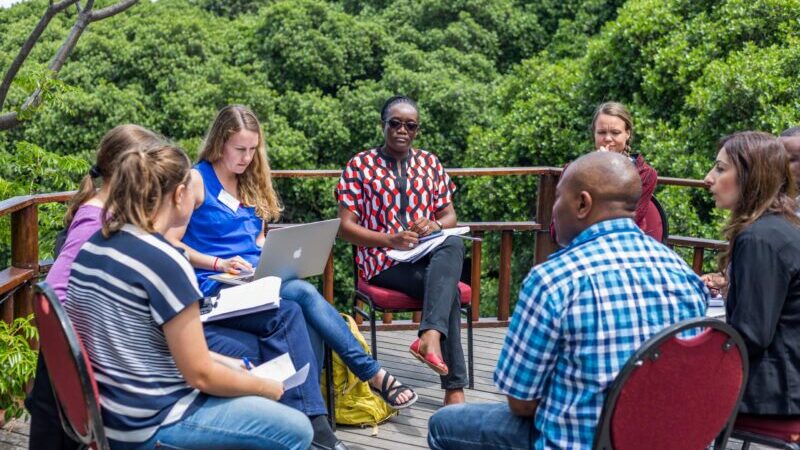Action research can help make the Global Goal on Adaptation more tangible and reduce vulnerability at the same time.
“Where there is a flood, communities remain the first respondents, so it makes more sense to invest directly in them,” says Joshua Amponsem, founder of the Green Africa Youth Organisation (GAYO).
GAYO is a member of the Adaptation Research Alliance (ARA), an international coalition driving research and innovation for adaptation where it is needed most. Alongside more than 125 ARA members, GAYO is pursuing the Global Goal on Adaptation (GGA) created in 2015 with the Paris Agreement.
The GGA is the adaptation equivalent to the global goal of mitigation, to limit global temperatures to 1.5°C. The GGA aims to do this by enhancing adaptive capacity, strengthening resilience, and reducing vulnerability.
“To reduce vulnerabilities, we need to understand the specific and peculiar susceptibilities of communities,” says Amponsem, highlighting the benefits this has for “inclusion, representation and respect for all voices”.
By driving an agenda of collaboration and action research in the global adaptation community, the ARA is working with its members to improve adaptation outcomes. According to Jesse DeMaria-Kinney, head of the ARA’s Secretariat, action research, or Research for Impact, can help build a connection between science and experience that directly increases the resilience of communities.
“If research is done with people, the research processes themselves can actually contribute to increasing people’s capacities, and their resilience, as much as the research findings.” he says.
For the ARA, measuring change in terms of adaptive capacity, resilience, and vulnerability, is key. “Adaptation is an ongoing process, so it isn’t really an end goal per se in terms of something to reach,” says DeMaria-Kinney.
As part of the global stocktake process, there is great interest in the GGA and thinking about how to track and assess countries’ progress on adaptation actions.
“One of the really important aspects for us at the ARA, also linked to the global goal, is how we can turn adaptation metrics into a solution,” says DeMaria-Kinney.
Figuring a common metric or set of metrics, however, is a challenge. It requires a balance between what is universally possible to collect data on and what data actually tells us about the people concerned.
“One of the challenges is that adaptation issues are very context-specific. What we aim to do at the ARA is work together with a series of stakeholders across the research to action spectrum to connect people and knowledge on the ground to better understand what’s happening in order to develop solutions,” says DeMaria-Kinney.
María del Pilar Bueno is a professor at Universidad Nacional de Rosario in Argentina, which is also an ARA member. The university has specific training proposals and courses, including a new diploma in management of climate change. Moreover, the project “Argentina 1.5 degrees” focuses on the three components of the GGA with a mix of traditional and nontraditional approaches.
“One of the main assets of the ARA is to gather actors with very different backgrounds, working together to achieve more and better adaptation for people both at the global and the local level,” says Bueno.
“The ARA can play a crucial role in helping different actors understand how the global, national and local dimensions of adaptation come together in the global goal.”
For Amponsem, the ARA also links young people into the conversation through its collaborations with GAYO. “Young people already have access to an impressive amount of information,” he says. “Put that together with the will to survive and the desire to have a future, and that is a recipe for action.”
This post was sponsored by Adaptation Research Alliance. See our editorial guidelines for what this means.
